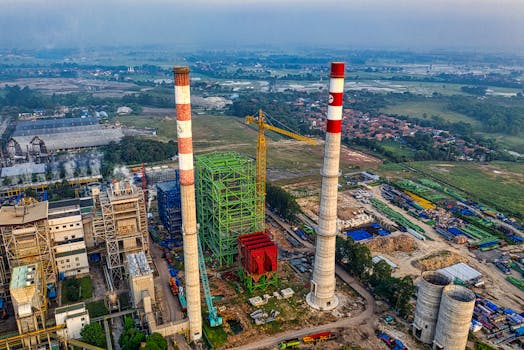Zero-Waste Electronic Manufacturing: Sustainable Production Revolutionizing Technology Industries
In today’s fast-paced and technologically advanced world, electronic devices have become an integral part of our daily lives. From smartphones and laptops to household appliances and cars, the demand for electronic devices continues to grow at unprecedented rates. With this increase in demand, the production of electronic devices has also skyrocketed, leading to a significant increase in electronic waste. This has given rise to the need for sustainable production processes, such as zero-waste electronic manufacturing, to revolutionize the technology industry and promote environmental conservation.
The Environmental Impact of Electronic Manufacturing
The rapid growth of the technology industry has led to a staggering amount of electronic waste being generated each year. According to a report by the United Nations University, the world produces around 50 million tonnes of electronic waste annually, with only 20% of it being properly recycled or disposed of. The remaining 80% ends up in landfills, incinerators, or worse, in our oceans and water bodies. This not only poses a threat to the environment but also to human health, as electronic waste contains hazardous materials such as lead, mercury, and cadmium.
The traditional manufacturing processes used in the technology industry contribute significantly to this electronic waste crisis. These processes often involve the use of non-renewable resources, toxic chemicals, and unsustainable production methods, resulting in a significant carbon footprint. However, with the increasing awareness of global environmental issues, there has been a shift towards more sustainable and eco-friendly production methods, such as zero-waste electronic manufacturing.
What is Zero-Waste Electronic Manufacturing?
Zero-waste electronic manufacturing is a production process that aims to eliminate waste at every stage of the manufacturing process. It follows the principles of the circular economy, which focuses on minimizing waste, maximizing resources, and recycling materials to create a closed-loop system. In this system, resources are used efficiently and continuously, with little to no waste being generated. This not only reduces the environmental impact but also saves costs and promotes sustainable and ethical practices.
The process of zero-waste electronic manufacturing involves the use of sustainable materials, such as bioplastics and recycled metals, for the production of electronic devices. These materials are renewable, biodegradable, and have a lower carbon footprint compared to traditional materials. They also reduce the amount of waste generated during the production process as they are designed to be reused, refurbished, or recycled.
The Benefits of Zero-Waste Electronic Manufacturing
Adopting zero-waste electronic manufacturing practices has numerous benefits for both the environment and the technology industry. By reducing the amount of electronic waste generated, this production process helps to conserve natural resources and minimize pollution. It also promotes the efficient use of resources, leading to cost savings and increased profitability for companies.
Furthermore, zero-waste electronic manufacturing is also a step towards achieving carbon neutrality. The traditional manufacturing processes used in the technology industry contribute to a significant amount of greenhouse gas emissions. By utilizing sustainable materials and reducing waste, the carbon footprint of electronic manufacturing can be significantly reduced, contributing to a greener and more sustainable future.
The Future of Sustainable Production in the Technology Industry
The increasing demand for electronic devices and the growing concern for the environment have made zero-waste electronic manufacturing a necessity rather than an option for technology companies. Many big players in the industry, such as Apple and Google, have already adopted sustainable production methods and have set ambitious goals to achieve a closed-loop system for their products.
Moreover, governments around the world are also taking steps to promote sustainable production and consumption practices. The European Union, for instance, has implemented the Waste Electrical and Electronic Equipment (WEEE) directive, which aims to reduce the environmental impact of electronic waste by promoting the reuse, recovery, and recycling of electronic products.
Conclusion
The increasing awareness of environmental issues has brought the need for sustainable production methods to the forefront, especially in the technology industry. With the rise of zero-waste electronic manufacturing, we can expect to see a significant reduction in electronic waste and carbon emissions, promoting a more sustainable and greener future for generations to come.
As individuals, we can also contribute to this revolution by making conscious choices when purchasing electronic devices and properly disposing of our e-waste. By working together, we can create a world where technology and sustainability coexist harmoniously, making zero-waste electronic manufacturing the norm in the technology industry.











